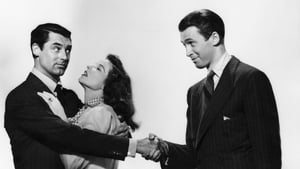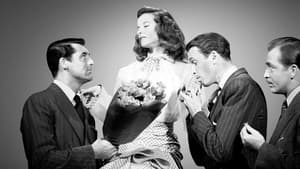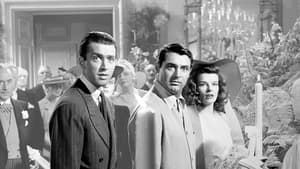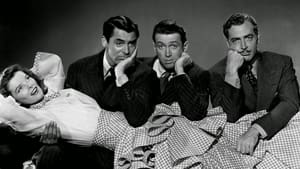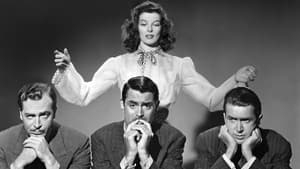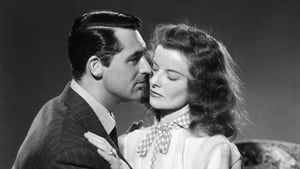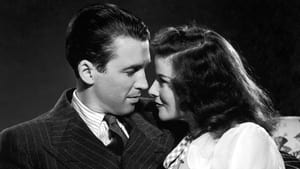Contact: [email protected]
Video Sources 0 Views
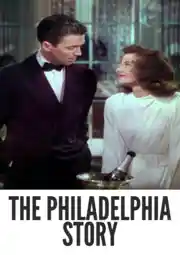
Synopsis
[ez-toc]




Introduction
In the vast landscape of cinema, there’s a timeless charm in old movies that continues to captivate audiences. The magic of black and white films, especially those from the 1940s, has left an indelible mark on the history of cinema. The Philadelphia Story, Colorized a classic romantic comedy from 1940, has recently undergone a transformation that adds a new dimension to its cinematic allure – colorization.
This article delves into the intricacies of The Philadelphia Story Colorized 1940, exploring the significance of colorization in movies, the impact on classic films, and the delicate balance between preserving the past and embracing modern cinematic technology.
Read Media File Transfer Agreement: Terms and Conditions
Read FAQ
The Philadelphia Story Colorized (1940)
Starring the iconic trio of Katherine Hepburn, Cary Grant, and Jimmy Stewart, The Philadelphia Story Colorized is a romantic comedy that weaves a tale of love, humor, and social intricacies. Set in the privileged world of Philadelphia’s high society, the film follows the story of Tracy Lord (Hepburn), a socialite preparing for her second marriage, as she grapples with the presence of her ex-husband (Grant) and a charming journalist (Stewart). The impeccable performances and witty dialogue make this film a true gem of the 1940s.
The Making of The Philadelphia Story
Beyond the star-studded cast, the film boasts a supporting ensemble that includes Ruth Hussey, Roland Young, and John Howard. Ruth Hussey, known for her role in the classic Topper, brings her distinctive charm to the film. Roland Young and John Howard complement the main cast seamlessly, creating a dynamic that contributes to the film’s enduring appeal. The collaborative effort of this talented ensemble, under the direction of George Cukor, resulted in a cinematic masterpiece that transcends time.
Exploring Colorization in Movies
Colorization, the process of adding color to black and white films, has been a subject of debate in the film industry. Originating in the 1980s, it aimed to breathe new life into old movies for contemporary audiences. The controversy surrounding colorization revolves around the potential distortion of the filmmaker’s original vision. However, proponents argue that colorization can make classic films more accessible to younger generations who may be less inclined to watch black and white.
Colorizing The Philadelphia Story Colorized (1940)
Bringing The Philadelphia Story Colorized into the realm of color involved a meticulous process using advanced technology. The plot, characters, and the chemistry between the lead actors remained intact, while the addition of color aimed to enhance the visual experience for modern audiences. The challenge lay in preserving the film’s authenticity while embracing the benefits of colorization. The result is a version that sparks nostalgia while providing a fresh perspective on the beloved classic.
Analyzing Characters and Themes in Color
Colorization techniques allow for a deeper exploration of character nuances. In The Philadelphia Story Colorized 1940, the vibrancy of Tracy’s emotions, the elegance of her surroundings, and the subtle shifts in relationships are brought to life in a way that wasn’t possible in the original black and white format. This visual enhancement adds a layer of richness to the storytelling, offering viewers a new lens through which to appreciate the film.
Reception of The Philadelphia Story Colorized Version
The release of the colorized version in India garnered attention, with audiences expressing diverse opinions. User reviews praised the film’s renewed visual appeal and accessibility, while critics weighed the merits of colorization against the sanctity of the original. The controversy surrounding colorized versions persists, yet the film found a new audience who appreciated the effort to contemporize a classic.
The Philadelphia Story Colorized: A Timeless Masterpiece
Despite the debates surrounding colorization, The Philadelphia Story Colorized remains an enduring masterpiece. Katharine Hepburn’s portrayal of Tracy Lord and James Stewart’s charismatic journalist earned the film two Academy Awards, including Best Actor for Stewart. The film’s impact on the romantic comedy genre is undeniable, securing its place in the annals of cinematic history.
The Historical Context of The Philadelphia Story Colorized (1940)
The roots of The Philadelphia Story Colorized lie in Philip Barry’s original play, influenced by the socialite Helen Hope Montgomery Scott. The play, and subsequently the film, draws inspiration from real-life events, creating a narrative that resonates with the complexities of love and societal expectations. The historical context adds depth to the film, making it a reflection of its time and a timeless exploration of human relationships.
Preserving the Charm of Classic Cinema
The comedy of remarriage, a genre defined by the works of George Cukor and Donald Ogden Stewart, is exemplified in The Philadelphia Story. The restoration and preservation of original black and white films become crucial in ensuring that the essence of this genre is retained. Classic films like The Philadelphia Story offer a window into the cultural and cinematic landscapes of their eras, and their preservation is a testament to the artistry of a bygone era.
Should You Watch Colorized Versions?
The question of whether to watch colorized versions of classic films is subjective. The pros include a renewed visual experience, increased accessibility for younger audiences, and a potential revitalization of interest in older films. However, purists argue that the original black and white format is integral to the filmmaker’s vision. The decision ultimately rests on individual preferences, with some embracing the evolution of cinema and others advocating for the preservation of its original form.
How to Experience The Philadelphia Story in Its True Glory
For those seeking the authentic charm of The Philadelphia Story, the recommendation is to explore high-quality black-and-white versions or restored prints. Platforms that specialize in classic cinema often offer these versions, allowing audiences to immerse themselves in the film’s original elegance and the subtle nuances captured by the filmmakers.
Embracing the Beauty of Cinematic Artistry
Appreciating classic films in their original format is a celebration of cinematic artistry. The beauty of The Philadelphia Story lies not just in its narrative and performances but in the artful use of black and white cinematography. The grainy texture, the play of shadows, and the stark contrast contribute to the film’s unique aesthetic, preserving a visual language that defined an era.
Conclusion
In the colorful world of cinema, The Philadelphia Story Colorized 1940 stands as a testament to the evolving nature of film technology. While purists may argue for the preservation of original black and white films, the colorized version opens doors to new audiences and revitalizes interest in cinematic classics. As we navigate the delicate balance between preserving the past and embracing modernity, let us appreciate the diverse ways in which we can experience the magic of The Philadelphia Story and other timeless films. Whether in black and white or vibrant hues, these classics continue to weave their spell, transcending time and captivating generations of cinephiles.
